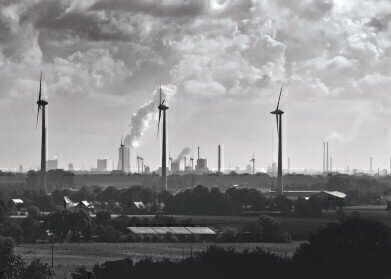Air Monitoring
How Have Carbon Emissions Changed in 2019?
Dec 10 2019
Carbon emissions have risen slightly in 2019, according to the Global Carbon Project. Despite the fact that consumption of coal fell in the past 12 months, overall emissions of CO2 have increased due to ongoing growth in the use of oil and gas. That continues a worrying trend of continued growth since 2015, despite the Paris Agreement’s aims to reduce emissions and curb climate change.
The figures demonstrate that while awareness over the importance of air quality monitoring has grown (particularly in cities), the problem has not actually improved at all. In 2018, CO2 emissions rose by an alarming 3%. While the increase this year was more slight (at just 0.6%), that progress is not enough if we are serious about our commitment to limit global warming to 1.5°C.
Oil and gas fill coal void
Consumption of coal has fallen significantly in some parts of the world such as the USA and the EU, where its use has decreased by as much as 10% in 2019 alone. However, regions such as China and India both still rely heavily on the damaging fuel source to meet their energy needs, and though they enjoyed less economically prosperous years than predicted, emissions from coal across the globe fell by less than 1%.
Meanwhile, natural gas consumption was up by 2.6% and demand for oil remained high, as well. It’s for these reasons that the gains made in renewable technology were not able to offset the ongoing increase in fossil fuels and that overall carbon emissions continued to increase. “Compared to coal, natural gas is a cleaner fossil fuel, but unabated natural gas use merely cooks the planet more slowly than coal,” explained Dr Glen Peters from the Cicero Centre for International Climate Research.
Pulling together
While some countries have been posting impressive results with regard to their carbon footprint, others are still works in progress. The US, for example, has seen its emissions fall by around 1% every year since 2005 and, for all President Trump’s championing of fossil fuels, that trend continued in 2019. Elsewhere, both China (2.6%) and India (1.8%) saw their emissions rise again in 2019, though perhaps not by as much as previously predicted (India was forecast to emit 5.1% more carbon this year).
Even the EU is not unanimous in its progress. While the majority of countries in the bloc are on course to meet their targets for greenhouse gas emissions by 2020, others are falling short. The UK, Spain, Italy and Greece are among those performing most impressively, while the Netherlands, Cyprus, Austria, Germany, Luxembourg and Ireland are in danger of missing their objectives if the situation continues as it has been developing in recent years.
Digital Edition
IET 34.2 March 2024
April 2024
Gas Detection - Biogas batch fermentation system for laboratory use with automatic gas analysis in real time Water/Wastewater - Upcycling sensors for sustainable nature management - Prist...
View all digital editions
Events
Apr 22 2024 Hannover, Germany
Apr 22 2024 Marrakech, Morroco
Apr 23 2024 Kuala Lumpur, Malaysia
Apr 23 2024 Kintex, South Korea
Apr 23 2024 Edmonton, AB, Canada


















